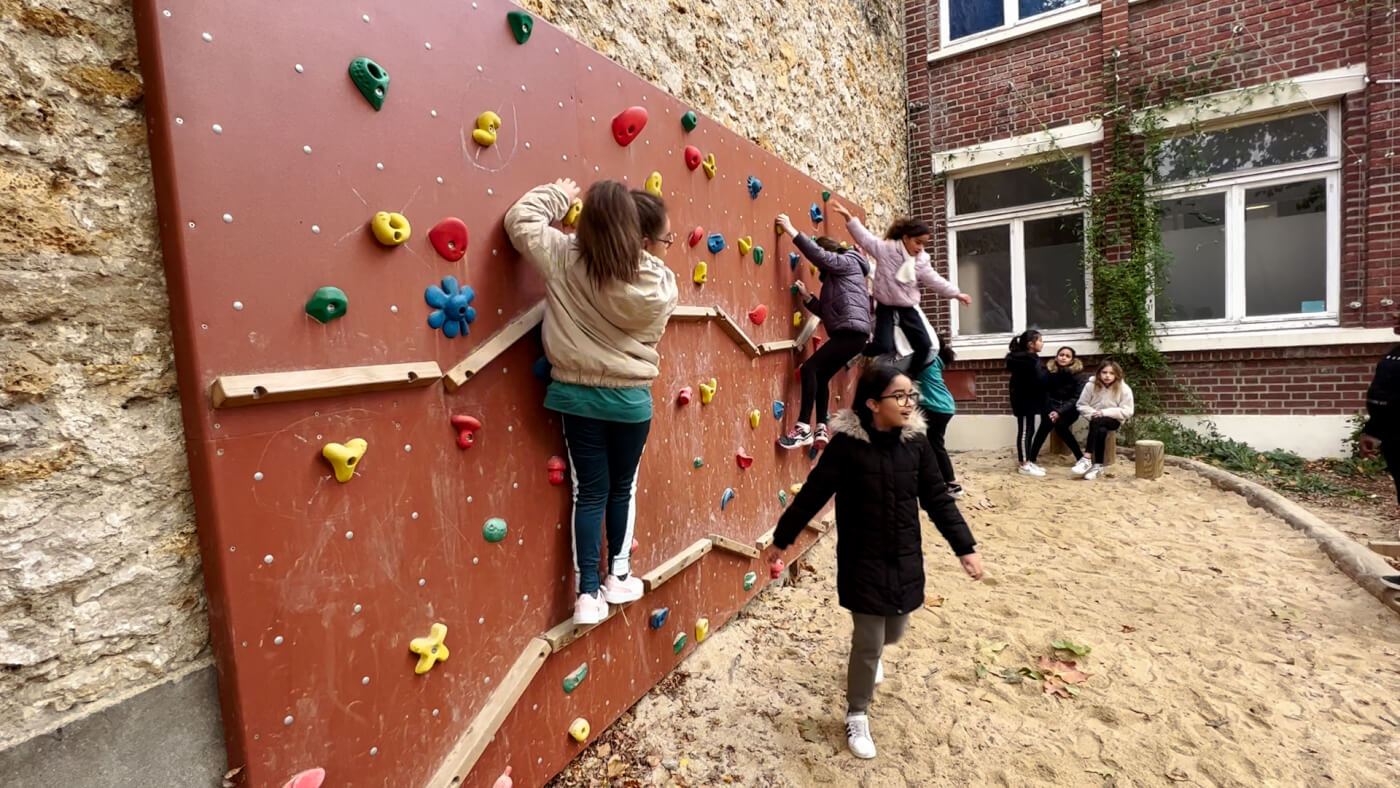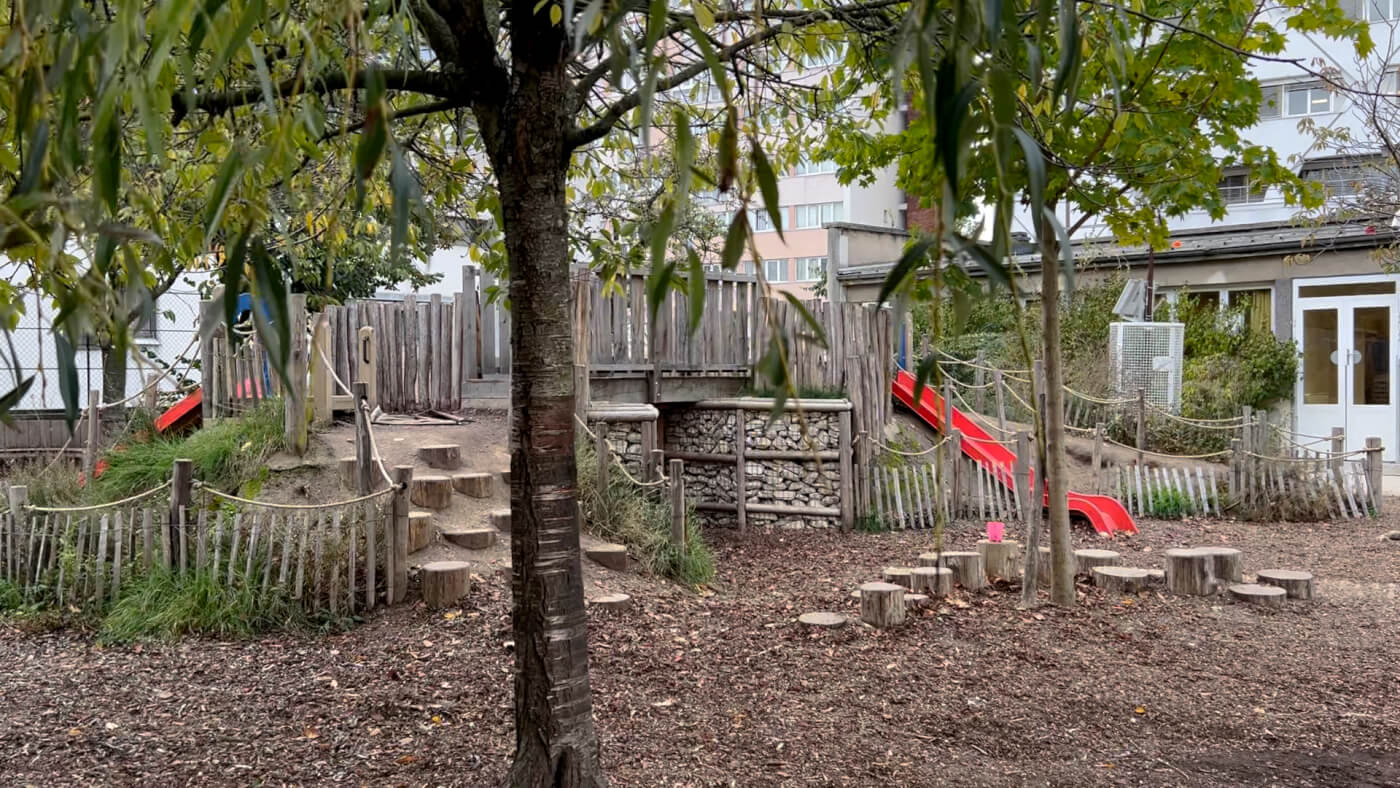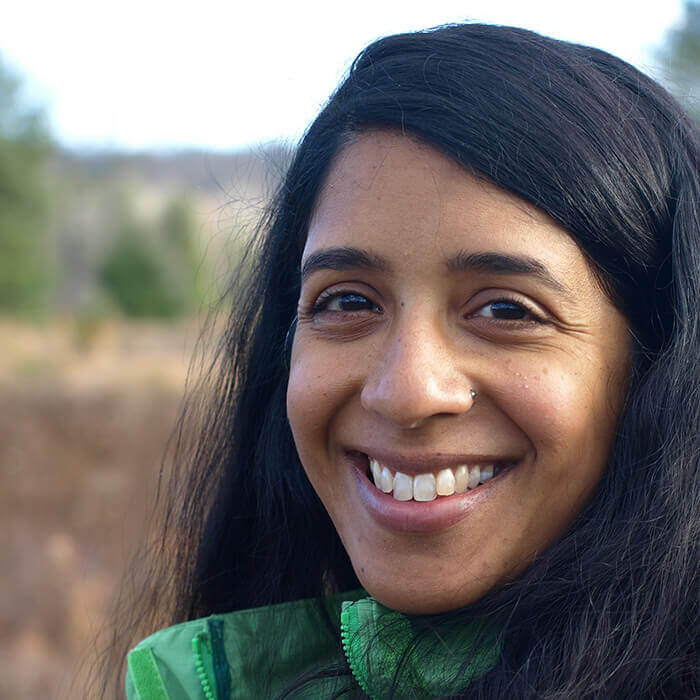LEVELING THE PLAYING FIELD: Nature play for gender equity
As preschoolers, my two young boys would hang longingly outside the fence of our neighborhood public school and ask if they could join the pickup soccer game. When they finally enrolled, they gleefully trotted out to join the “big kids” sprinting around the plastic soccer turf, which occupies roughly two-thirds of the schoolyard playspace. I remember vividly my then 5-year-old’s first words when he stepped off over an hour later:
“Mama, where are all the girls?”
My boys instantly noticed a disparity increasingly under investigation by researchers and on the minds of schoolyard designers across the country: the centerpieces, and often the majority, of schoolyard real estate are de facto devoted to boys.
Research on existing schoolyards and parks documents that boys typically engage in more moderate to vigorous physical activity, and many researchers, designers and schoolyard users are asking: do we accept that girls are less physically active than boys, or have we designed play environments that are more desirable to boys?
Urban designer, architect and researcher Honorata Grzesikowska, along with her partners, conducted two rounds of year-long observations tracking the paths of children during recess in Catalunya, Spain. They found that “physically active, strong kids take up the central part of the schoolyards (most of them boys), leaving space for the trajectories of (unwillingly) less active kids on the peripheries (girls). This becomes even more evident in ‘football-centric’ designed outdoor spaces.”

Spaghetti method analysis; sex-based (biological) trajectories of kids during the school break. The densest red lines show girls’ favorite place available – under the stairwell. Photo courtesy of Honorata Grzesikowska.
Organizations such as UK-based Make Space for Girls are working to address the issue of adolescent girls being “designed out” of public spaces during an important social and developmental stage of their lives. They document that girls perceive that ubiquitous skate parks and sports fields are not for them and that they are unwelcome in play spaces designed for young children. Instead, adolescent girls’ preferred features include social seating, walking loops, smaller and varied areas, swings, outdoor gyms and toilet facilities. A study in Denmark heard directly from schoolgirls that “greenery, such as grassy areas, trees and bushes” were important for promoting physical activity during recess, such as hide and seek, den-building, tree-climbing and dramatic play.

Girls play on a playspace in Paris, France. Photo courtesy of Brenda Kessler.
Denmark’s Wonder Wood schoolyard and forest activity zone was successfully designed with the explicit goal of increasing the physical activity of girls and other under-engaged users of school grounds. The “forest loop” offers a raised, 500-meter wooden boardwalk that weaves through the schoolyard and forested areas, and includes features like a treehouse, benches, balance beams and ladders.
Growing bodies of research and design case studies show that adding natural elements to a schoolyard can increase physical activity for both girls and boys, and that girls’ activity keeps pace with boys’ when there are natural features and play spaces of interest to them. Greater amounts of green space, and particularly access to woodlands for play, help maintain levels of moderate to vigorous physical activity in girls. This is especially important in later adolescent years, where there is typically a decline in girls’ physical activity.
The Paris OASIS Schoolyard Program intentionally deprioritizes large sports fields and courts in favor of natural play that is appealing to all genders. OASIS, which stands for “Schoolyards: Openness, Adaptation, Sensitisation, Innovation and Social ties,” additionally implements climate adaptation strategies to create cooling oases at neighborhood schools that benefit children, teachers and residents. Playground features sequester heat trapped by the built environment, collect rainwater for “learning rivers” and include natural elements like willow tree huts, tunnels and more.

A natural play space in Paris, France. Photo courtesy of Brenda Kessler.
With increasing awareness that thoughtfully designed spaces can diminish gender disparities, nature-infused spaces offer a strong, multi-benefit solution. Incorporating natural designs may literally level the playing field, ensuring that children of all ages and genders can access the social, health and developmental benefits afforded in spaces where they feel a true sense of belonging.
Inspired by the growing attention to gender-based play equity and echoing my boys, I ask my American play space and schoolyard colleagues: “Where are all the play spaces for girls?”
Global Lessons on Greening School Grounds & Outdoor Learning
Green Schoolyards Resource Hub
Green Schoolyard Design Features, a visual gallery
Research Digest: Global Lessons for Green Schoolyard Design and Pedagogy
Research Digest: Schools Connecting Children to Nature
Research Digest: Barriers to Nature Engagement
SEEING GREEN: How Natural Schoolyards Enable Equitable Engagement with Nature, a Finding Nature News story
Steam Beans is demystifying nature — and science — for Black girls, a Finding Nature News story
Girls Who Click: Inspiring young female nature photographers, a Finding Nature News story
-
Voices
CAMPING WHILE PARENTING: A Mother-Son Adventure
-
Feature
A common thread: Indigenous-led foundation weaves together activism and art, climate and community
-
Network News
Community Spotlight: Prescribe Outside
-
Voices
That’s nice, mija: Finding common language in nature connections
-
Richard Louv
"HUMMINGBIRD PARENTS": Seven Actions Parents Can Take To Reduce Risk And Still Get Their Kids Outside






